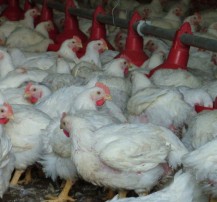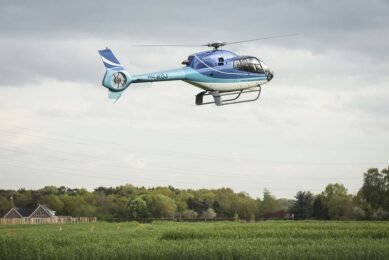Continued focus on food security and welfare

Poultry specialists gathered together during the annual meeting ofthe UK branch of the World’s Poultry Science Association (WPSA). An overall trend in the topics discussed was the need to keepfocusing on food security and welfare.
By Naheeda Portocarero , UK
World population will peak at around nine billion by 2050 thereafter remaining stable, according to Professor Sir John Beddington, chief scientific advisor of the UK government, during the annual meeting of the UK branch of WPSA, last April. “The challenge is to accelerate food production while reducing the environmental impact of farming. Considering that currently a quarter of the USA’s corn output is used for the rapidly growing biofuels sector, that while around one billion people are estimated to be obese a further billion are starving, and also considering pressure on water and oil, the challenge becomes enormous.
Sustainable intensification has been proposed as a way forward, and the poultry sector shows strong potential for improvement. Opportunities include a shift of focus to non-traditional feed ingredients. Glycerol, for example, has been put forward as a potential substitute not only for wheat but also for soya oil. There is also scope to reduce excessive fat deposition by identifying the genes responsible for fatness, and research into both these areas is ongoing”, Beddington said.
Life-cycle assessment
Egg production has been identified as a relatively environmentally efficient per unit output, compared to other animal systems, but its environmental impacts can still be reduced. A group of UK researchers has made a life-cycle assessment from “cradle to gate” to quantify the environmental burden of the main production systems and have found large differences in efficiency of production, feed consumption and energy use.
Egg production has been identified as a relatively environmentally efficient per unit output, compared to other animal systems, but its environmental impacts can still be reduced. A group of UK researchers has made a life-cycle assessment from “cradle to gate” to quantify the environmental burden of the main production systems and have found large differences in efficiency of production, feed consumption and energy use.
These could be used to drive efficiency improvements in the UK’s egg industry. Dr B. Thorp of the Royal School of Veterinary Studies, Edinburgh, gave a veterinarian’s view on the layer industry. The decline of all-in-all out systems due to a move towards free range systems brings new challenges for disease management, especially due to the flocks’ continuous contact with wild birds. The result has been deterioration in the health of the UK’s commercial layer flocks and increased costs on a per bird basis. “There is a need for new natural-based remedies to be developed as well as for genetic selection for increased immunity”.
Attention to welfare
Another perspective was given by T. Humphrey from the National Centre for Zoonoses research who pointed out that poor welfare of animals caused by intensive production (especially of broilers) can have direct consequences for public health and food safety. It is commonly observed that levels of campylobacter and other pathogens are higher in the faeces after transport to the slaughterhouse, than on the farm.
Another perspective was given by T. Humphrey from the National Centre for Zoonoses research who pointed out that poor welfare of animals caused by intensive production (especially of broilers) can have direct consequences for public health and food safety. It is commonly observed that levels of campylobacter and other pathogens are higher in the faeces after transport to the slaughterhouse, than on the farm.
This can be explained by the stress-hormone nor-adrenaline which is released into the gut and acts as an iron-capture mechanism for campylobacter, allowing them to grow and colonise the gut more effectively. So attention to welfare, as well as efficiency and environmental impact, must be part of the overall picture.
Continuous improvement
An interesting approach to improving feed conversion efficiency is taken by David Filmer who has been testing a feeding system which delivers discrete meals throughout the day, rather than allowing ad-lib feeding. The idea is that the digesta contents of the crop will achieve a porridge-like consistency and this will improve FCR. Commercial tests showed that around 0.033 improvement in FCR was seen, representing substantial feed savings as well as a reduced carbon footprint.
An interesting approach to improving feed conversion efficiency is taken by David Filmer who has been testing a feeding system which delivers discrete meals throughout the day, rather than allowing ad-lib feeding. The idea is that the digesta contents of the crop will achieve a porridge-like consistency and this will improve FCR. Commercial tests showed that around 0.033 improvement in FCR was seen, representing substantial feed savings as well as a reduced carbon footprint.
Join 31,000+ subscribers
Subscribe to our newsletter to stay updated about all the need-to-know content in the poultry sector, three times a week. Beheer
Beheer








 WP Admin
WP Admin  Bewerk bericht
Bewerk bericht